Vicki Szabo simply couldn’t resist when she was asked to harvest the bones of a beached, 13-foot long, pilot whale that had been dead for two months.
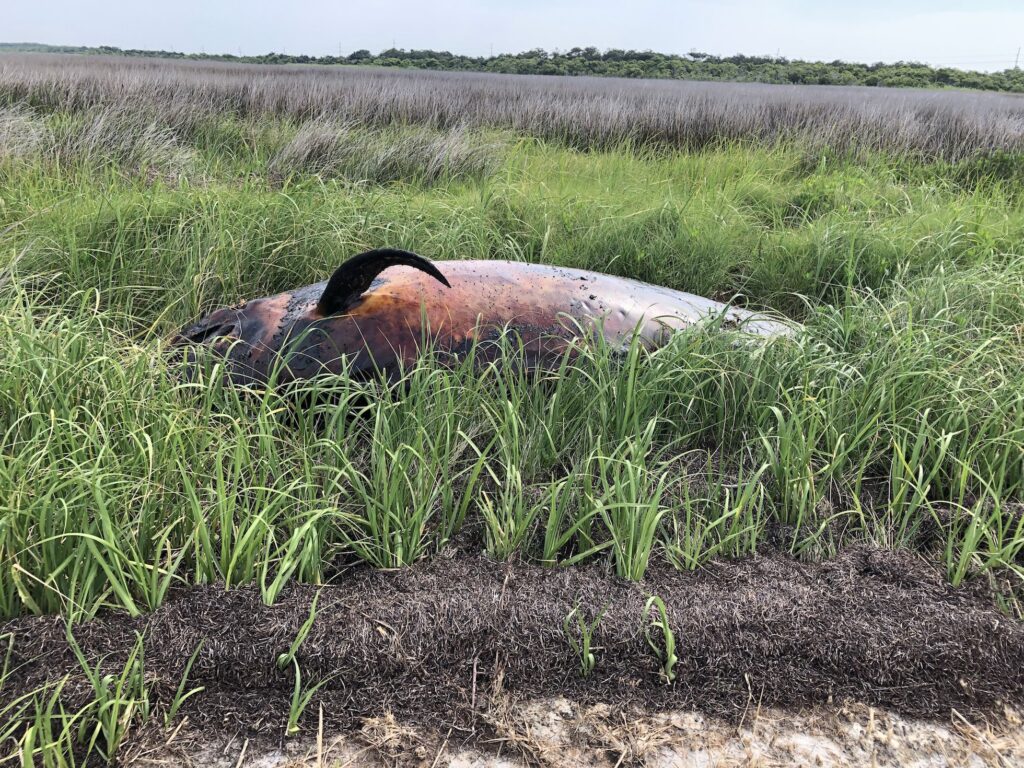
Szabo, WCU history professor, studies Norse Vikings in the sub-Arctic from the year 800 to 1300. Vikings would make tools and weapons out of whale bones. Her mission was to discover how: through what processes, what tools, and with which parts.
So when she got the call about a dead whale she took action. With two other WCU professors, Dr. Jane Eastman and Dr. Alexander Macaulay, Szabo treaded out to the Pamlico Sound to retrieve the beached whale.
The butchering, while fascinating, is not for the faint of heart. Maybe skip this story if you don’t want to see a dead, sunburnt and cut up whale… or it’s greasy bones.
Eastman, an archeologist, was brought along for her handiness with tools, experimental archeology and butchering experience. Macaulay, a history professor said he was brought along simply for “grunt labor.”
“It never entered my mind I’d be doing something like this,” said Macaulay.
To get to the dead whale they had to walk for an hour, trudging through a maritime forest, wearing nets to combat mosquitos and tics. After the forest, they sank into a swamp up to their knees, with the potential of running into alligators, snakes or other dangerous creatures.
To their surprise, the whale was completely intact when the team arrived, besides some severe sunburning.
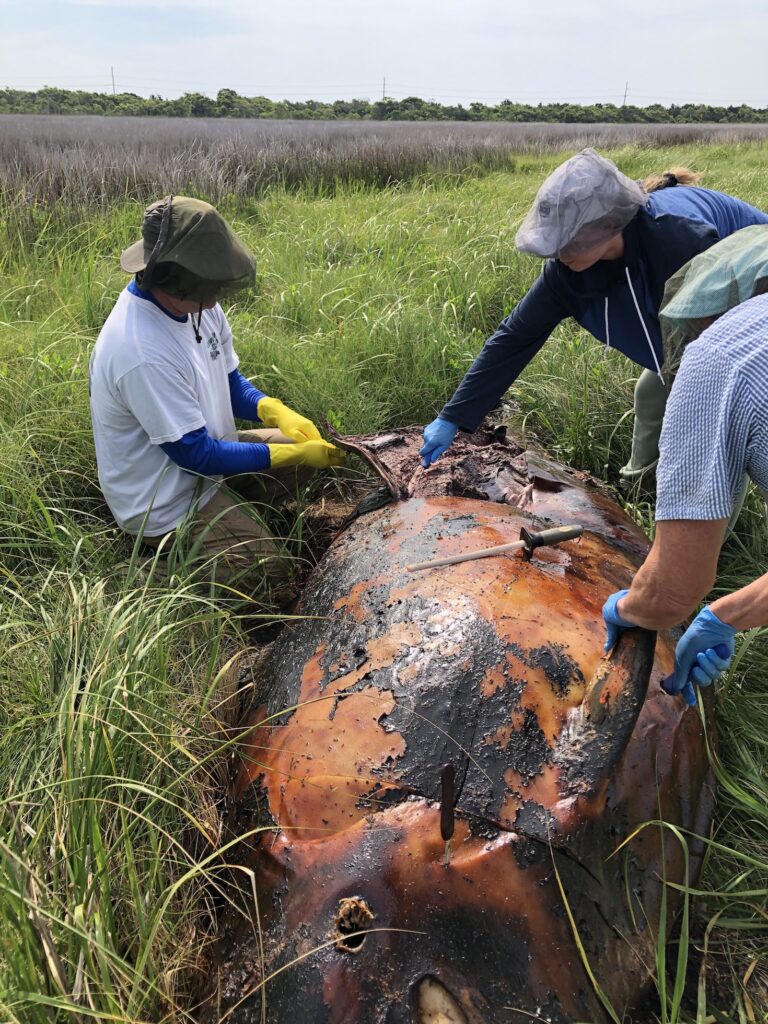
Eastman had the most experience in butchering animals. However, the animals she butchered were always recently deceased. This was not the case for the pilot whale. Additionally, this was also the largest animal she had ever worked with.
“It was really much more difficult than I expected it would be,” said Eastman.
Macaulay dug a hook into the skin, cut the meat out, broke some bones, and cleaned them off.
Much like a delicious chicken wing, or in this case, a very much dead whale, the meat stripped cleanly off the bone.
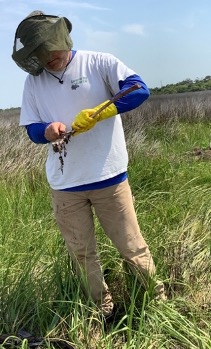
“I didn’t understand how a whale was put together,” said Szabo. “There was so much meat […] if I were a Medieval peasant and I came upon a whale like this, I was stunned with how much I could use of it, even two months dead.”
Although they attempted to butcher it like how medieval Vikings would have, the team had to use axes, a tool that was not used by the Norse Vikings. Szabo noted that medieval artifacts did not have the damage an axe would inflict on the bones, so it is still unclear what tools they used in that time to take a whale apart.
If she got the chance to butcher a whale again, Szabo hoped to use wedges and sledges.
Afterwards, the team trudged an hour back, whale bones in tow.
In total, they collected 11 vertebra, 10 ribs, 12 teeth, a complete left pectoral assemblage, a scapula (a shoulder bone), and the sternum. Due to the limit of time and the weight the three of them could carry, she only collected what she knew the Vikings used to make tools.
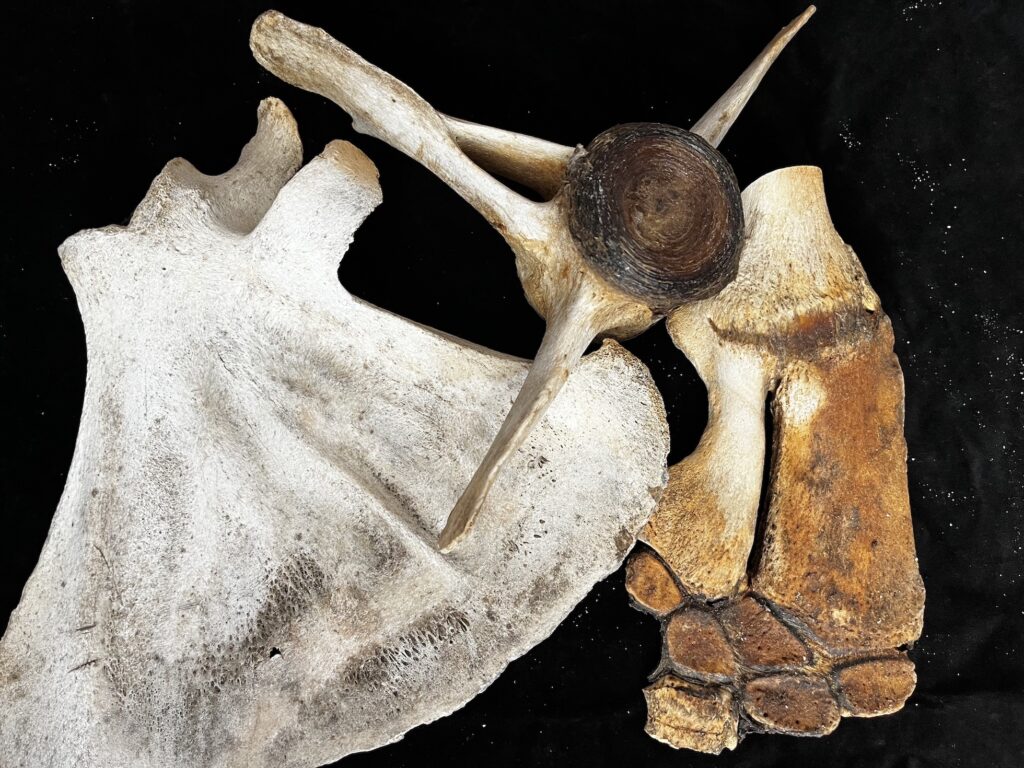
Her goal for this excursion was to study the bones to better understand how they were crafted into tools. They would be taken to several labs and have experiments conducted on them to understand how these bones could have been manipulated.
Szabo explains how whale bones can complicated to work with. Unlike human bones, they are greasy and solid all the way through, with a closed channel that is filled with oil.
Because of this, if the Vikings wanted to break it and work it into something else, it would have to be treated.
Szabo hired a graduate student from UNC Wilmington, Elsa Ehlers, to soak the bones and use different tools to make indents on them.
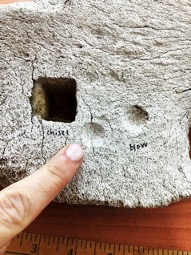
Ehlers worked for Bonehenge Whale Center, a museum full of bones – and a playground for Szabo. The facility helped them clean and process the bones for their experiment. Szabo, Ehlers, and Eastman helped to create the experimental protocols at the facility.
Ehlers tested what would happen if the bones were boiled and soaked for a number of weeks (2 weeks, 3 weeks, and 4 weeks.) Then, she would use a variety of tools to cut or make indents on them, like saws, axes, knives, and drills in an attempt to replicate Medieval bone working.
Ehlers and Szabo learned that some whale bones become even more dense the further inward you go, making it easier to make impressions on some parts but far more difficult on others.
They were able to pull data on the density and structure of the bone, learn more about how different treatments impacted the bone, and came a few steps closer to understanding how the Vikings used these objects to create tools.
The experiment has ended, but Szabo hopes to replicate it again sometime soon. Eastman notes that there is a bottlenose dolphin being shipped to Western for a necropsy (animal autopsy) for students to observe.
“I’m sorry she [the whale] died, but we got science out of her, which is pretty cool,” said Szabo.



